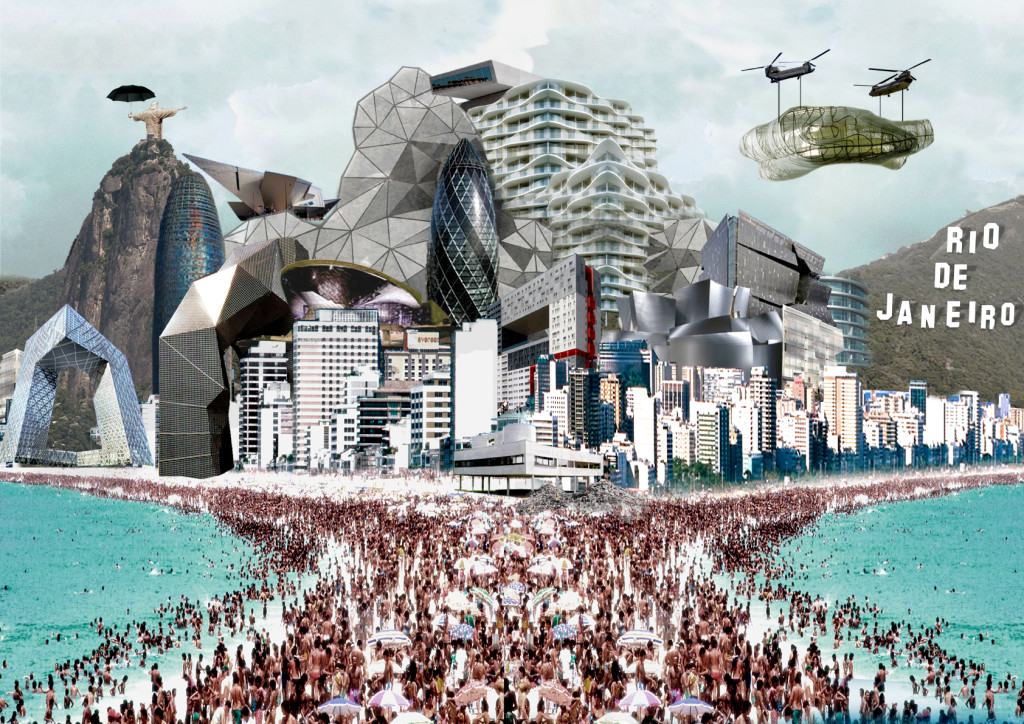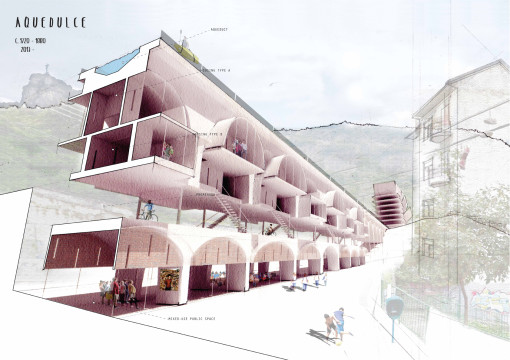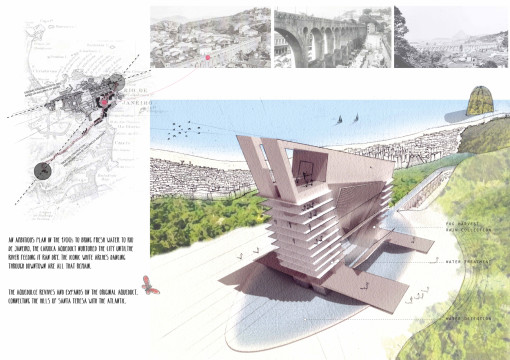Info:
Title: AQUEDULCE - Code: 0fa15Contest: Rio de Janeiro / 2013
By: nicaraokatz
Views: 3463 Likes: 2
Votes:
Alejandro Zaera-Polo 4 Jeffrey Inaba 4 Jeroen Koolhaas 1 Hernan Diaz Alonso 1 Cristiano Toraldo di Francia 7 Pedro Rivera 74.0
AQUEDULCE
Starting at the top of the Santa Teresa hills and spanning to the Atlantic Ocean, Aquedulce revives and expands on the original vein of Rio de Janeiro. It unearths the past and unites the present, bridging the chasms of a city both marvelous and frail. Conquered by the Portuguese for its trading potential, Rio had all the makings of a worldly city—except for its lack of fresh water. Conceived by colonial governors in the early 1700s as an ambitious and desperate plan to quench the thirst of the new settlement, the Carioca Aqueduct stretched from the mouth of the Carioca River to the belly of fast-growing downtown. The aqueduct became the lifeline of the city for 150 years, until the river at its source ran dry. White arches prancing through downtown Rio today are the only remnants of the aqueduct. A structure that was at one time the most important in the city now stands as a barren symbol of nostalgia. The promise of life that it carried has faded; its vitality has expired. The arches have devolved into a postcard opportunity for tourists and a faded testament of hope for Los Cariocas. Rio lacks connectivity. It is defined by high-density pockets of poverty—the favelas—in the shadow of international wealth. The extremes of social class have no common ground, no shared experiences or spaces, and as a result citywide integration is near impossible. Rio is divided into two presents, two ways of life, two cities. What if the aqueduct was resurrected? What if the aqueduct was the Aquedulce, connecting cultures, history, and physical spaces—weaving through different communities and stitching holes along the way? Fed by a rainwater-detention and treatment facility at the top, the structure comprises four levels, each with a different program: the first level is a mixed-use public space for galleries, schools, and markets; the second level is a promenade for running and biking, offering an uninterrupted route for miles; the third level contains housing, encouraging both the rich and poor to live within the same structure; and the fourth level contains the aqueduct, open to the public for water activities. The Aquedulce doesn’t require demolition, only addition—piecing together the fragmented society. The monument that already exists in downtown Rio, Arcos da Lapa, would stay, yet when joined with Aquedulce, it would become functional and relevant again, a tribute to the past and a beacon for the future. Rio would once again have an opportunity to grow, this time not apart but as one.








